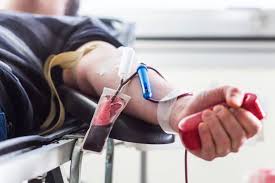 Non-voluntary donation of blood has been advanced as another cause of erectile dysfunction (ED) in men.
Non-voluntary donation of blood has been advanced as another cause of erectile dysfunction (ED) in men.
It also causes Fibromyalgia in both male and female. Fibromyalgia is a disorder characterised by widespread musculoskeletal pain accompanied by fatigue, sleep, memory and mood issues.
According to a consultant hematologist at the Lagos University Teaching Hospital (LUTH), Prof. Sulaiman Akanmu, male erectile dysfunction also known as impotence can result directly from iron overload when men do not donate blood, and their blood cannot be replenished.
Prof. Akanmu spoke on: “Medical reasons inherent in voluntary blood donation”, organised by Lagos University Teaching Hospital (LUTH) as a way of driving blood stock for its blood bank.
He said the cause of high iron levels in men is due to a genetic condition called hemochromatosis – also known as Iron Overload.


 “Iron plays a part in creating hemoglobin, which is the substance in red blood cells that does the actual carrying of oxygen and maintain the perkiness of a man’s penis. But when iron is too much in the body, it becomes dangerous and gets concentrated in the liver, bone joints and oxygen is impeded, and man will not be able to have a good erection.
“Iron plays a part in creating hemoglobin, which is the substance in red blood cells that does the actual carrying of oxygen and maintain the perkiness of a man’s penis. But when iron is too much in the body, it becomes dangerous and gets concentrated in the liver, bone joints and oxygen is impeded, and man will not be able to have a good erection.
He encouraged men to get involved in voluntary blood donation.
For women, Prof. Akanmu said they lose iron by menstruating every month but if they do not still donate, they risk other ill health conditions.
“Men are prone to accumulating potentially toxic levels of ingested iron in their organs and glands. Although iron is an essential element for healthy life, too much iron can overwhelm the body’s natural storage capability, leading to oxidative stress, tissue damage and early aging.
“Excessive body iron accumulation can also lead to impotence, loss of libido (sexual interest) and function, depression, loss of muscle mass and strength, enlargement and impairment of liver and spleen, loss of body hair, hypothyroidism, hypogonadism- inadequate functioning of the testes, with noticeable changes (darkening) of semen colour, chronic fatigue and joint pain. Too much iron should be suspect in the presence of any of these symptoms especially in combination.”








